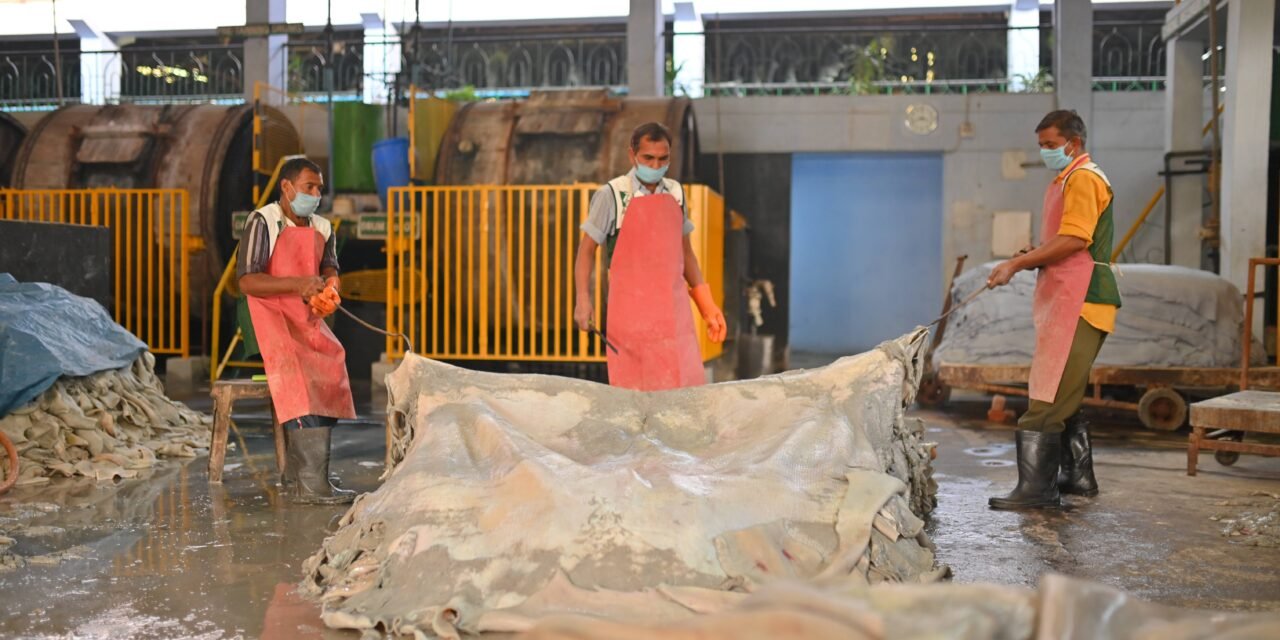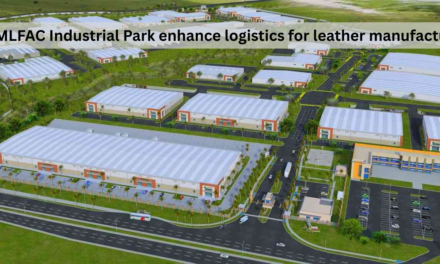The leather industry in Panapakkam is a significant part of Tamil Nadu’s leather sector, but it is one among several key leather manufacturing hubs in the state. While Tamil Nadu overall is the leading leather-producing state in India, Panapakkam stands out in certain areas due to its specialized facilities, strategic location, and integration with the MLFAC Industrial Park. Here’s how the leather industry in Panapakkam compares to other prominent leather manufacturing regions in Tamil Nadu:
1. Production Scale and Focus
- Panapakkam (Ranipet District):
Panapakkam, as part of the Ranipet leather cluster, is known for its high volume of leather production, particularly in footwear, accessories, and finished leather. The region is heavily focused on the export market, with a concentration on high-quality footwear and leather goods.- Footwear Production: Panapakkam has one of the highest concentrations of leather footwear manufacturing units in Tamil Nadu. The region is known for producing millions of pairs of leather footwear annually, which are widely exported to international markets.
- Leather Goods and Accessories: Panapakkam also produces a significant volume of leather bags, belts, and wallets, and these are high in demand both locally and globally.
- Chennai (including Ambur and Vaniyambadi):
The Chennai metropolitan area is another key leather manufacturing region in Tamil Nadu. Ambur and Vaniyambadi, located near Chennai, are famous for high-quality leather footwear production, particularly in the wholesale and export segments. These towns are considered the footwear capital of India, with a focus on high-end footwear and customized leather products.- Footwear Export Hub: Ambur and Vaniyambadi account for a large portion of India’s leather footwear exports, and their focus on quality and durability makes them leaders in this segment.
- Tanning Industry: Both regions are also known for their tanning facilities, which provide raw materials for leather products across India and abroad.
- Tirupur:
While Tirupur is best known for its knitwear and textile industry, it has also emerged as an important center for leather garments, especially leather jackets and gloves. The region benefits from proximity to Coimbatore, which supplies raw materials, and has a strong export orientation for fashion leather goods.- Leather Garments and Jackets: Tirupur has specialized in the production of leather jackets, gloves, and garments, with a significant focus on international exports to markets like Europe and North America.
2. Infrastructure and Facilities
- Panapakkam’s MLFAC Industrial Park:
Panapakkam stands out for its modern infrastructure, particularly the MLFAC Industrial Park (Mega Leather, Footwear, and Accessories Cluster). This park offers common facilities such as centralized waste treatment plants, logistics hubs, and advanced technology for leather processing and production. This integrated approach allows for economies of scale, making Panapakkam more efficient and attractive to international investors.- Sustainability Focus: The park’s emphasis on eco-friendly production through green technologies (such as chrome-free tanning and water recycling) gives Panapakkam an edge in the global market where sustainability is becoming a key criterion.
- Chennai/ Ambur/ Vaniyambadi:
These regions have also developed strong industrial infrastructure, particularly for footwear production. However, they may not have the same level of centralized facilities for all stages of production (from tanning to finishing) as in Panapakkam. Many of the leather units in these areas operate as independent units without the same degree of integration found in Panapakkam’s MLFAC.
3. Environmental and Regulatory Standards
- Panapakkam’s Green Focus:
Panapakkam has made considerable strides in adopting eco-friendly practices, particularly in the area of waste management and effluent treatment. The MLFAC Industrial Park has centralized effluent treatment plants that ensure compliance with environmental regulations. This makes Panapakkam a model for sustainable leather manufacturing, aligning with international environmental standards. - Chennai/ Ambur/ Vaniyambadi:
While other regions in Tamil Nadu are making strides toward better environmental compliance, particularly with the Tamil Nadu Pollution Control Board (TNPCB) guidelines, Panapakkam’s centralized waste management and eco-friendly production techniques give it a competitive advantage in meeting global environmental standards, especially in the European Union and North America, where sustainability is a significant factor in consumer purchasing decisions.
4. Labor and Skill Development
- Panapakkam’s Workforce:
Panapakkam is part of the broader Ranipet District, which has a long history of leather craftsmanship. The region focuses on vocational training through collaborations with institutions like the Leather Sector Skill Council to ensure that workers are skilled in modern leather crafting techniques, technology-driven processes, and quality control.- Skilled Labor Pool: The MLFAC Industrial Park in Panapakkam offers advanced training programs for workers in collaboration with educational institutions, making it a hub for skilled labor.
- Ambur/ Vaniyambadi:
Ambur and Vaniyambadi are also well-known for their skilled leather artisans, especially in footwear manufacturing. However, Panapakkam’s focus on technology integration and modern production methods gives it an edge in terms of meeting international quality standards.
5. Market Orientation
- Panapakkam’s Export Focus:
Panapakkam has positioned itself as a key hub for export-oriented production, with a particular emphasis on footwear, leather bags, and accessories. Its integration with global supply chains, proximity to Chennai Port, and modern infrastructure make it a competitive player in international markets. - Ambur/ Vaniyambadi:
These regions also have strong export links, particularly for leather footwear, but their focus is more on bulk production rather than specialized, high-end products. While they produce large volumes of leather goods for global markets, Panapakkam’s emphasis on high-quality leather goods and eco-friendly practices makes it an attractive option for premium markets.
Conclusion
Panapakkam stands out in Tamil Nadu’s leather industry due to its modern infrastructure, focus on sustainability, and integrated production facilities through the MLFAC Industrial Park. While regions like Ambur, Vaniyambadi, and Tirupur have their strengths in areas like footwear, leather garments, and export-oriented bulk production, Panapakkam excels in offering a more diverse range of leather products, emphasizing quality and eco-friendly practices. Panapakkam’s strategic location, focus on innovation, and commitment to environmental standards help it maintain a competitive edge in both domestic and international markets.
Hashtags
#PanapakkamLeatherIndustry #TamilNaduLeatherClusters #LeatherManufacturingTN #PanapakkamFootwearPark #RanipetLeatherHub #TamilNaduLeatherSector #LeatherIndustryComparison #PanapakkamVsOtherRegions #LeatherProductionIndia #TamilNaduIndustrialDevelopment







